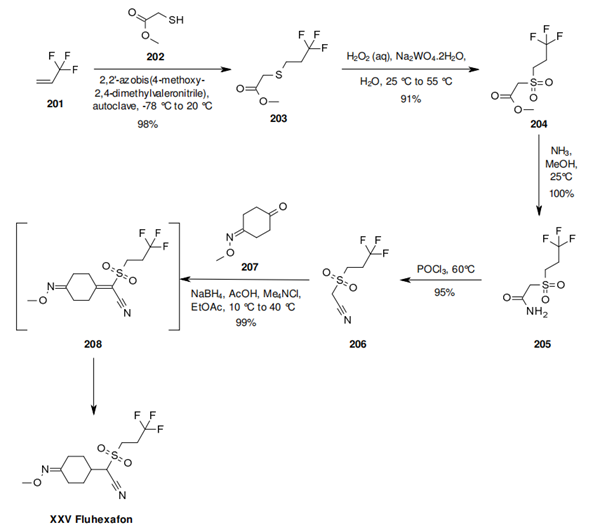What is the synthesis of the insecticide Fluhexafon?
Feb 29,2024
Synthesis of Fluhexafon
The key for a scalable synthesis of fluhexafon (XXV) was to find a cheap source of CF3 that could be incorporated into the final product. Sumitomo scientists achieved this by a radical addition of thioglycolate (202) to 3,3,3- trifluoropropene (201). This radical addition yields 203 in excellent yield and selectivity. Tungstate catalyzed oxidation of the sulphide 203 gives the sulphone 204, which can be converted to the primary amide 205, and then dehydrated to the required molecule 206 with high efficiency. The sulphone 206 is then condensed and reduced in a single step with the oxime 207 to give fluhexafon (XXV), using in situ prepared triacetoxyborohydrides.

Introduction of Fluhexafon
Fluhexafon is a new insecticide from Sumitomo. It has reported uses on aphids and hoppers, but is also reported to have uses in animal health (activity on ectoparasites) and public health, with activity on cockroaches, house flies, and mosquitoes.
- Related articles
- Related Qustion
Astatine is commonly classified as a metalloid. A metalloid is an element that exhibits properties of both metals and nonmetals.....
Feb 29,2024Inorganic chemistryPyflubumide is a novel acaricidal compound that has been developed by the Nihon Nohyaku Company. Pyflubumide is in fact a procide, with the active ingredient being the free N-H molecule which is obtained by in vivo cleavage of the acyl gr....
Feb 29,2024DrugsYou may like




